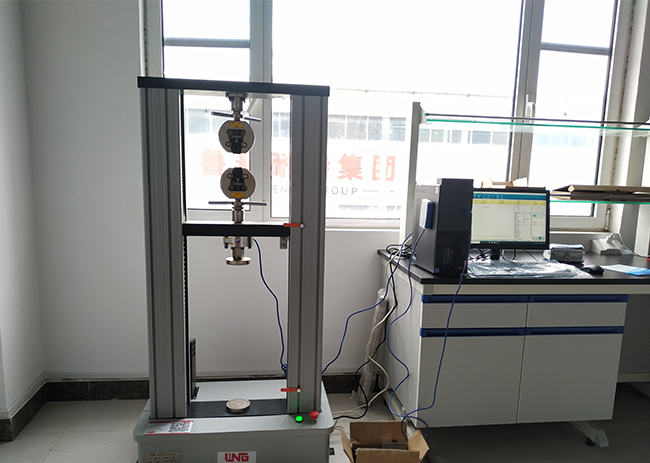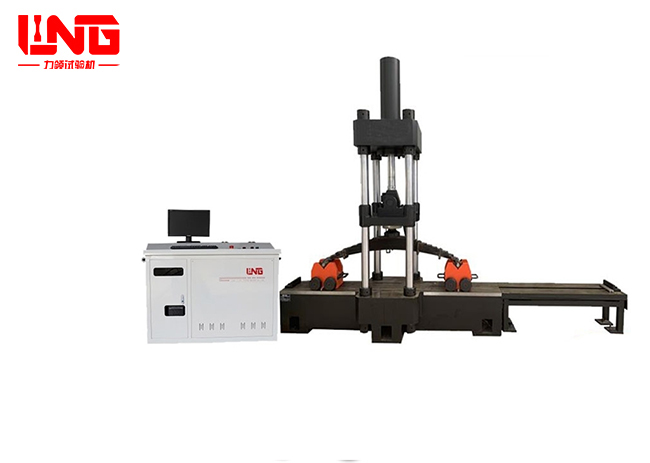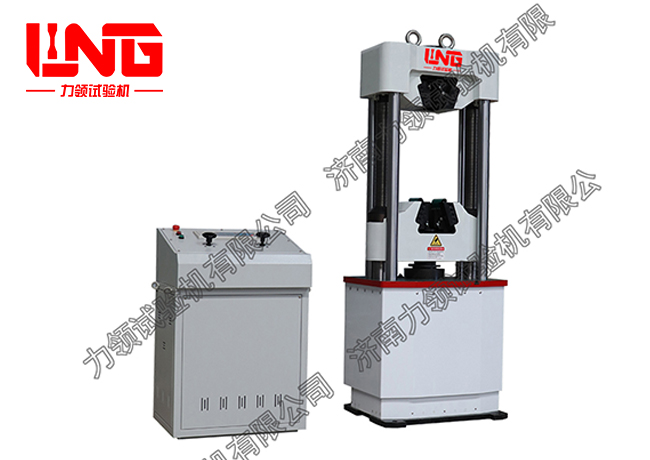News (click to select category)
The difference between calibration and verification of tensile testing machine
Date:2023-10-31ID: 240Heat:

I. Overview
Tensile testing machine is a commonly used testing instrument in industrial production, used to test the tensile properties and tensile strength of materials. In order to ensure the accuracy and reliability of the test results, it is necessary to regularly calibrate and calibrate the tensile testing machine. Although calibration and verification are both used for quality assurance of testing instruments, they have certain differences.
2、 Calibration of tensile testing machine
Calibration of a tensile testing machine refers to adjusting it to meet certain specifications and standards. The purpose of calibration is to ensure the accuracy and reliability of test results, as well as to improve the service life of the tensile testing machine. The calibration process mainly includes the following steps:
1. Choose a standard calibrator for comparison.
2. Adjust the zero point error of the tensile testing machine.
3. Adjust the reading error of the tensile testing machine based on the reading of the standard calibrator.
4. Check if the mechanical structure of the tensile testing machine is intact.
The calibration of the tensile testing machine should be carried out by trained professional technicians, and the calibration results and process should be recorded for ease of subsequent inquiry and traceability.
3、 Verification of tensile testing machine
Tensile testing machine calibration refers to the inspection of the tensile testing machine to determine its compliance with certain specifications and standard requirements. The purpose of verification is to ensure that the tensile testing machine can work stably and reliably within the specified measurement range, in order to reduce errors in the test results. The verification process mainly includes the following steps:
1. Check whether the appearance and mechanical structure of the tensile testing machine are intact.
2. Measure the zero point error and reading error, and calculate the error range.
3. Use standard force for stroke measurement and torque measurement.
4. Record the test results and perform data processing and analysis.
The calibration of the tensile testing machine should be carried out by a third-party organization with calibration qualifications, and a calibration certificate should be issued. The verification cycle is usually one year, but it can also be shortened or extended according to actual circumstances.
4、 Conclusion
Although the calibration and verification of tensile testing machines are both used to ensure the accuracy and reliability of test results, there are certain differences between the two. Calibration is the process of adjusting a tensile testing machine to meet certain specifications and standards; Verification is the inspection of a tensile testing machine to determine its compliance with certain specifications and standards. In practical use, the tensile testing machine should be regularly calibrated and verified to ensure the accuracy and reliability of the test results.
Tensile testing machine is a commonly used testing instrument in industrial production, used to test the tensile properties and tensile strength of materials. In order to ensure the accuracy and reliability of the test results, it is necessary to regularly calibrate and calibrate the tensile testing machine. Although calibration and verification are both used for quality assurance of testing instruments, they have certain differences.
2、 Calibration of tensile testing machine
Calibration of a tensile testing machine refers to adjusting it to meet certain specifications and standards. The purpose of calibration is to ensure the accuracy and reliability of test results, as well as to improve the service life of the tensile testing machine. The calibration process mainly includes the following steps:
1. Choose a standard calibrator for comparison.
2. Adjust the zero point error of the tensile testing machine.
3. Adjust the reading error of the tensile testing machine based on the reading of the standard calibrator.
4. Check if the mechanical structure of the tensile testing machine is intact.
The calibration of the tensile testing machine should be carried out by trained professional technicians, and the calibration results and process should be recorded for ease of subsequent inquiry and traceability.
3、 Verification of tensile testing machine
Tensile testing machine calibration refers to the inspection of the tensile testing machine to determine its compliance with certain specifications and standard requirements. The purpose of verification is to ensure that the tensile testing machine can work stably and reliably within the specified measurement range, in order to reduce errors in the test results. The verification process mainly includes the following steps:
1. Check whether the appearance and mechanical structure of the tensile testing machine are intact.
2. Measure the zero point error and reading error, and calculate the error range.
3. Use standard force for stroke measurement and torque measurement.
4. Record the test results and perform data processing and analysis.
The calibration of the tensile testing machine should be carried out by a third-party organization with calibration qualifications, and a calibration certificate should be issued. The verification cycle is usually one year, but it can also be shortened or extended according to actual circumstances.
4、 Conclusion
Although the calibration and verification of tensile testing machines are both used to ensure the accuracy and reliability of test results, there are certain differences between the two. Calibration is the process of adjusting a tensile testing machine to meet certain specifications and standards; Verification is the inspection of a tensile testing machine to determine its compliance with certain specifications and standards. In practical use, the tensile testing machine should be regularly calibrated and verified to ensure the accuracy and reliability of the test results.






